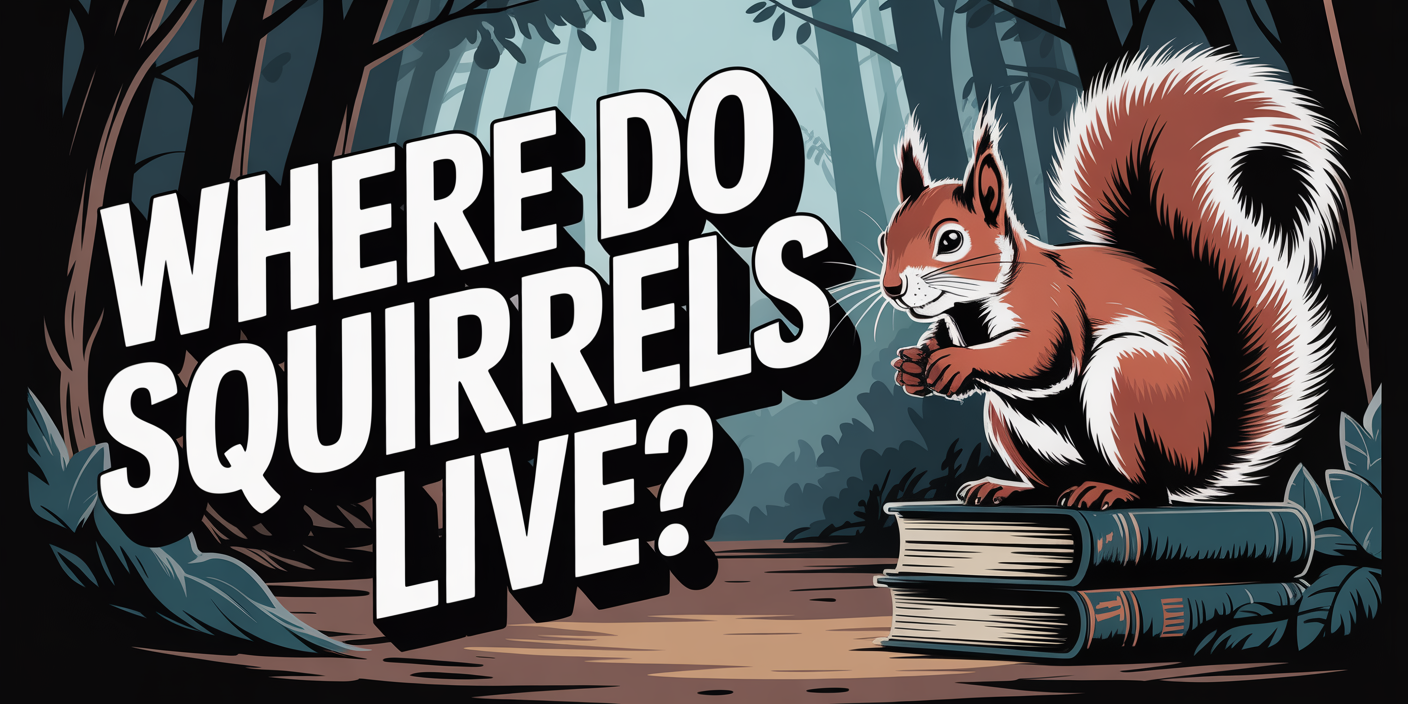Squirrels live in a wide range of habitats, including forests, urban parks, residential yards, and even inside homes. Squirrels live in forests, parks, yards, and sometimes inside homes.
Squirrels are some of the most adaptable wildlife you’ll see, whether they’re sprinting across power lines, raiding gardens, or zipping up trees. While they seem playful and harmless, these quick climbers are constantly looking for safe places to eat, sleep, and raise their young.
Understanding where squirrels live gives you insight into how they survive and why they sometimes end up in human spaces. Their habitats range from dense forests to suburban backyards, and in some cases, even inside attics or crawl spaces. If you’ve noticed them getting a little too close for comfort, AAAC Wildlife Removal is here to step in with safe, humane solutions.
The places squirrels call home depend on their species. Tree squirrels build leafy nests high in branches, ground squirrels burrow underground, and flying squirrels glide between trees at night, often nesting in hollow trunks. Each type has its own way of creating shelter while staying close to food sources.
For instance, Eastern gray squirrels, common on the Treasure Coast, prefer tall oaks and pines but won’t hesitate to move into an attic if it offers warmth and safety. So while spotting squirrels outside might be entertaining, knowing their favorite habitats is the first step in keeping them out of your home.
What Types of Environments Do Squirrels Prefer?
Squirrels are highly adaptable animals that thrive in a variety of environments, from dense forests and open grasslands to suburban neighborhoods and city parks. Their primary requirements are simple: access to food like nuts, seeds, and fruits, and safe shelter such as trees, shrubs, or man-made structures.
In natural settings, tree squirrels gravitate toward mature woodlands with tall trees for nesting and foraging, while ground squirrels prefer open fields and rocky areas for digging burrows. In more urban areas, squirrels often settle in backyards, rooflines, and even chimneys, using these structures the same way they would use tree hollows or natural crevices in the wild.
Do Squirrels Live in Trees or Underground?
Tree squirrels, like the Eastern Gray and Fox squirrel, typically build their nests, called dreys, high up in tree branches or inside hollow trunks. These elevated spots give them a wide view of their surroundings and help protect them from ground-based predators like snakes, foxes, and raccoons.
On the other hand, ground squirrels live in burrows dug deep into the soil, often in fields, pastures, or under decks and sheds. These tunnel systems can be surprisingly complex, offering multiple escape routes and chambers for food storage, sleeping, and raising pups.
Where Do Squirrels Nest Around Homes?
When squirrels move closer to human homes, they look for warm, hidden spaces that offer protection from predators and the elements. Common nesting spots include attics, chimneys, crawlspaces, garages, and even behind walls, basically anywhere quiet and undisturbed.
These locations provide everything a squirrel needs to raise young and stash food, especially during colder months. If you hear scratching sounds in the ceiling or notice insulation being torn up, there’s a good chance a squirrel has turned your home into its personal nesting zone.
What Time of Year Do Squirrels Build Nests?
Squirrels typically build or repair their nests twice a year, once in late winter for the spring birthing season and again in late summer to prepare for fall litters or colder weather. These seasonal cycles ensure their young have a safe, insulated space during critical growth stages and that adults are protected during harsher conditions.
To build their nests, squirrels gather leaves, twigs, bark, grass, and even bits of trash or fabric if they’re near residential areas. In attics or garages, they might tear up insulation, cardboard, or paper to line their nests, making them even more of a nuisance for homeowners.
Are There Regional Differences in Squirrel Habitats?
Yes, different squirrel species have unique habitat preferences depending on the region and local climate. For instance, Eastern Gray Squirrels are commonly found in wooded and urban areas across the eastern United States, while the Abert’s Squirrel sticks to conifer forests in the Southwest, especially around Arizona and New Mexico.
In warmer climates like Florida or Southern California, squirrels stay active year-round and may even nest earlier due to milder winters. Meanwhile, ground squirrels in colder regions hibernate during the winter months, spending extended time in underground burrows to avoid the freezing temperatures.
Why You Shouldn’t Ignore a Squirrel’s Nest Near Your Home?
A squirrel nesting near or inside your home isn’t just a cute visitor, it can lead to serious property damage. These animals chew constantly to keep their teeth filed down, which means they might gnaw on wood beams, electrical wires, or even PVC plumbing, creating costly hazards like fire risks or water leaks.
Beyond damage, squirrel nests attract parasites like fleas and ticks, leave behind droppings, and create foul odors that can linger through walls and vents. Left alone, a single squirrel can quickly become a whole family, making it even harder to safely remove them without professional help.
How AAAC Wildlife Removal Can Help With Squirrels?
If you suspect squirrels have made themselves at home in your attic, roofline, or garage, AAAC Wildlife Removal is ready to help. Our trained professionals use humane and effective methods to safely remove squirrels, seal entry points, and prevent future infestations without harming the animals.
We also offer cleanup services to remove droppings, nesting materials, and contaminated insulation, restoring your space to a clean, safe condition. With local teams across the country and same-day service in many areas, we’re here to protect your home while keeping wildlife where it belongs, outside.
Protect Your Home from Squirrel Trouble
Squirrels may be entertaining to watch in the yard, but once they start nesting near or inside your home, they become a real problem. Their nesting habits can lead to structural damage, noise disturbances, and even health risks if left unchecked.
Knowing where squirrels live and why they choose certain spots can help you spot trouble early. If you notice any signs of squirrel activity, it’s best to act fast and call in the pros at AAAC Wildlife Removal to keep your home safe and squirrel-free.
Ready to Evict Your Unwanted Furry Tenants?
Don’t wait for chewed wires or attic noises to turn into costly repairs. If squirrels have moved in, AAAC Wildlife Removal can safely and humanely move them out.
Our local experts are just a call away and ready to secure your home before the damage piles up. Call AAAC Wildlife Removal today and reclaim your space before the squirrels do.




